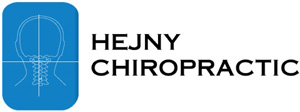 When you are feeling pain or pressure in your head, the only thing you might be thinking about is how to make it stop. At the moment, you may not wonder if it is a headache or a migraine. However, later you may think back to what you actually experienced. The truth is headaches and migraines are two different things. Contrary to popular belief, a migraine is not just a really bad headache. It is important to know what you are going through so that you can get the right kind of care. Being well informed can also help you prevent future headaches or migraines. This article will help you determine which one you are dealing with and where to find help for it.
When you are feeling pain or pressure in your head, the only thing you might be thinking about is how to make it stop. At the moment, you may not wonder if it is a headache or a migraine. However, later you may think back to what you actually experienced. The truth is headaches and migraines are two different things. Contrary to popular belief, a migraine is not just a really bad headache. It is important to know what you are going through so that you can get the right kind of care. Being well informed can also help you prevent future headaches or migraines. This article will help you determine which one you are dealing with and where to find help for it.
Table of Contents
Headaches — What Are They?
Headaches are an uncomfortable pain in your head causing aching and pressure. The pain of headaches ranges from mild to severe and can be felt on both sides of your head. Specific areas in which headaches seem to occur are the forehead, back of the neck, and the temples. Headaches can last from 30 minutes to as long as a week. Some headaches feel as if they are squeezing the head. This is the most common kind of a headache called a tension headache. Triggers for tension headaches include stress, anxiety, and straining of the neck muscles.
What are some other headache types?
- Cluster headaches: These headaches are very painful headaches that occur on one side of the head and occur in clusters. Cycles of headache attacks are followed by headache-free periods.
- Sinus headaches: Sinus headaches are often diagnosed as migraines. However, these headaches happen in conjunction with a sinus infection. You will experience such symptoms such as fever, stuffy nose, congestion, facial pressure, and cough.
- Chiari headaches: A Chiari headache is due to a defect at birth known as a Chiari malformation. This makes the skull push against parts of the brain and often leads to pain in the back of the head.
- Thunderclap headaches: These headaches are very severe and come on in under 60 seconds. They may be caused by a subarachnoid hemorrhage (this requires immediate medical attention as it can be life-threatening). They can also be caused by an aneurysm, a stroke, or some kind of injury. If you have this kind of a headache, call 911 immediately.

What Is a Migraine?
A migraine is a neurological condition that has a headache as one of its symptoms. There are other symptoms involved with a migraine. These can include the following:
- Nausea and vomiting
- Throbbing and pounding head pain
- Pain behind one eye or ear
- Pain in the temples
- Visual disturbances — seeing spots, flashing lights, or even vision loss
- Sensitivity to light, sound, and certain odors
The pain associated with migraines ranges from moderate to severe. The pain can be so intense for some people that it causes them to seek care at the emergency department. Most migraines affect only one side of the head, unlike headaches. However, one-third of people have migraines that impact both sides of the head. The pain of migraines is much more intense than regular headaches. It is so severe that performing daily tasks can often become impossible until the pain subsides.
Migraines are typically grouped into two categories: migraines with and migraines without an aura. An aura is a type of warning sign that comes on about an hour or so before the actual head pain hits. An aura can make you experience the following:
- Unusual cravings for food
- Having trouble thinking
- Not feeling mentally alert
- Tingling and numbness in the face or extremities
- Having an unusual sense of taste, smell, or touch
- Seeing flashing lights or unusual lines and shapes
Finding Relief for Both Migraines and Headaches
People with migraines and headaches have been helped by entrusting their care to an upper cervical chiropractor. This is a specific type of chiropractic care that focuses on making sure the top bones of the neck are in proper alignment. The C1 (atlas) and C2 (axis) are designed to be a protection for the delicate brainstem. They are located in the area where the brainstem and the spinal cord meet.
It only takes a misalignment of ¼ of a millimeter in either of these bones to negatively impact the brainstem. The brainstem is the way the brain and body communicate. If this communication is hindered for some reason, it can cause major problems throughout the body. One thing that can be interrupted is the flow of cerebrospinal fluid and blood to and from the brain. Nerves and muscles can also become irritated.
Since a misalignment can cause so many issues, it would be reasonable to assume that if this misalignment is corrected, the problems may begin to clear up. By correcting the misalignment, blood and cerebrospinal fluid flow can be regulated once again. This allows the body to begin using its natural healing properties. The results may surprise you. You may just find yourself with an improvement in your headaches, or they may go away and not return.
These are the results that 9 out of 10 people see when they visit an upper cervical chiropractor. It has been known since the 1950’s that the neck is often the source of headaches and migraines. The Journal of the American Medical Association affirms this. It was noted as stating that headaches are not really a pain in the head but a pain in the neck.
We use a gentle method in which we are not required to pop or crack the neck to get results. Rather, we encourage the bones by natural means to move back into place on their own. This causes less trauma to the body and is less painful for the patient. If fewer headaches and migraines are the end result, isn’t it worth giving upper cervical chiropractic care a try?
To schedule a complimentary consultation with Dr. Hejny, call our Spring Lake Park office at 763-230-0116. You can also click the button below.
 If you are outside of the local area, you can find an Upper Cervical Doctor near you at www.uppercervicalawareness.com.
If you are outside of the local area, you can find an Upper Cervical Doctor near you at www.uppercervicalawareness.com.
